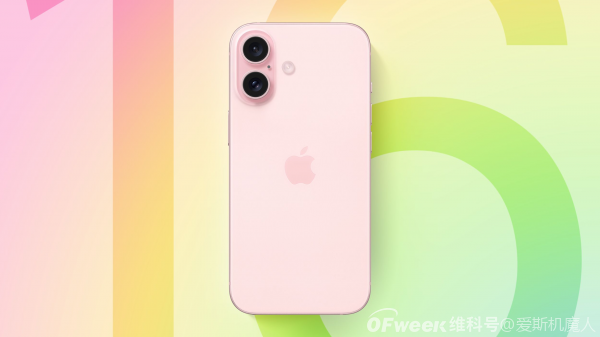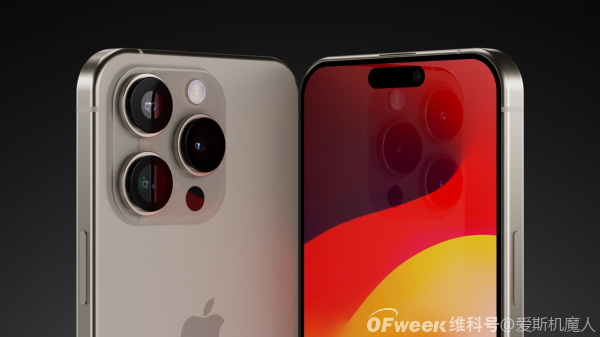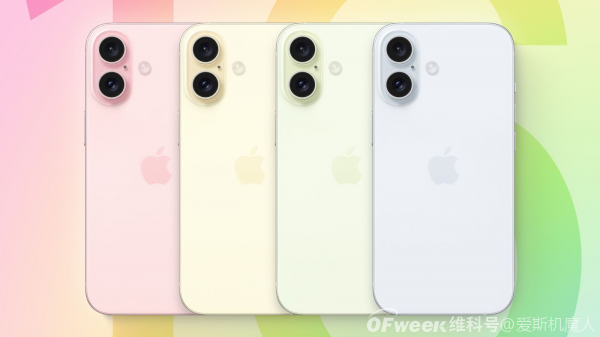iPhone 16 Heavy Exposure: Billions of Apple Fans Look Forward to More "Apple" Shocks!
![]() 07/03 2024
07/03 2024
![]() 508
508
According to Apple's annual tradition of holding its autumn product launch event in September, as we enter July, it's also the time for the new iPhone to finalize its design.
At the recently held WWDC 2024, Apple unveiled the Apple Intelligent artificial intelligence operating system. Considering factors like performance and storage, although the iPhone 15 Pro and iPhone 15 Pro Max will receive related AI features later this year, consumers are still more focused on the arrival of the iPhone 16 series.

First, according to reliable sources, Apple plans to use Samsung's latest generation M14 OLED panel for the first time in its upcoming iPhone 16 Pro and iPhone 16 Pro Max. This screen is hailed as Samsung's best display to date.
The Samsung M14 panel achieves 1200 nits in SDR brightness, representing a 20% improvement over the previous iPhone 15 Pro. This means that the new iPhone 16 Pro offers a more vivid and vibrant display with richer colors. Additionally, with an increased size of 6.9 inches, the iPhone 16 Pro Max becomes one of the largest iPhones in Apple's history. This not only provides users with a broader field of view but also offers a comfortable multitasking and video watching experience.
It's worth mentioning that the iPhone 16 Pro and iPhone 16 Pro Max also employ innovative BRS (Border Reduction Structure) narrow bezel technology. By wrapping the copper wires at the bottom of the screen to reduce the border width, the iPhone 16 Pro Max boasts a screen border width of only 1.15mm, making it one of the phones with the narrowest bezels in the world. This technological innovation further optimizes the user experience, enhances immersion, and provides users with a better overall experience.
In summary, the application of innovative technologies such as the Samsung M14 OLED panel and BRS will bring a stunning visual experience to the iPhone 16 Pro and Pro Max. We look forward to the launch of this new phone, bringing more "Apple" shocks to the mobile phone industry.
Moreover, according to a report by MacRumors, code discovered by Nicolás Alvarez in Apple's backend suggests that Apple plans to release four iPhone 16 models this year, all equipped with the same A-series chip.
Apple's backend code mentions new models unrelated to existing iPhones, including four iPhone 16 series models and one new iPhone SE model: iPhone17,1; iPhone17,2; iPhone17,3; iPhone17,4; iPhone17,5.
All five models start with the same digit, indicating that Apple plans to use the same chip for them.
MacRumors notes that while all four iPhone 16 models are expected to use the new A18 chip, Apple can still distinguish between standard models and Pro models, even offering separate A18 and A18 Pro names for the chips.
It is expected that all four models in the iPhone 16 series will adopt the A18 series chip manufactured using the N3E process. Despite using the N3E process, the A18 chips in the iPhone 16 and iPhone 16 Plus may continue to use the A17 Pro design from the iPhone 15 Pro models. Meanwhile, the iPhone 16 Pro and iPhone 16 Pro Max may be equipped with a chip named "A18 Pro," which will feature an upgraded neural engine with more cores for superior AI/machine learning performance.
Furthermore, according to foreign media reports, Apple plans to adopt Samsung System LSI's camera sensor as the core component of its main rear camera on the upcoming iPhone 16. The news indicates that Apple is conducting final quality inspections on the image sensor provided by Samsung to ensure it meets stringent standards.
Why did Apple choose Samsung over its usual supplier Sony? There are two main reasons behind this. First, Apple recently discovered some reliability issues with Sony's sensors, prompting Apple to look for alternatives. Second, Sony failed to supply the required camera sensors for the iPhone 15 on time, causing delays in Apple's phone launch plans. It is revealed that Apple had already asked Samsung to start developing sensors for the iPhone 16 last year.
Samsung System LSI's custom image sensor for the iPhone 16 uses a triple-wafer stack technology, with each layer carrying different functional components: photodiodes, transistors, and analog-to-digital converter logic. This contrasts sharply with the dual-wafer stack sensors used in previous iPhones, which integrated photodiodes and transistors on the same layer while placing analog-to-digital converter logic on a separate layer. The advantage of the triple-wafer stack design is that it provides higher pixel density while reducing noise and achieving smaller pixel sizes, resulting in a significant leap in image quality and detail capture.

In addition, following the change from a mute switch to an action button on the iPhone 15 Pro and iPhone 15 Pro Max, Apple is exploring more physical buttons.
Mark Gurman revealed that the iPhone 16 series will feature a dedicated camera button, supporting one-click access to the camera interface with functions like single-click photography and long-press video recording. It's still uncertain whether this button will be a physical button or a solid-state button. Meanwhile, the two standard models of the iPhone 16 will inherit the action button from the previous generation's Pro models, effectively making the iPhone's mute switch a thing of the past.
Although the iPhone 16 Pro/Max gains an independent camera button, the improvement in imaging is not significant. Both Pro-level iPhones receive a new 48-megapixel ultra-wide-angle camera, with the main focus on increasing pixel count compared to the previous generation. The iPhone 16 Pro Max's 5x periscope telephoto lens boasts a larger sensor area, allowing it to be actively utilized even at night.
It is rumored that the iPhone 16 Pro will also upgrade to a 5x periscope telephoto lens in this generation, replacing the previous 3x upright telephoto lens used for many years. However, considering the space limitations of the iPhone 16 Pro's body, its imaging performance will not see a significant improvement even with the new sensor.
Finally, according to foreign media reports, the supply chain revealed that Apple has increased its orders for the next-generation chip, expecting to purchase 90 million to 100 million A18 chips from TSMC. This move reflects Apple's strong demand forecast for its iPhone 16 series.
Reports indicate that during the initial launch of the iPhone 15 series last year, Apple purchased approximately 80 million to 90 million chips from TSMC. The increase in orders this year suggests that Apple expects higher demand for its 2024 products.
The "Apple Intelligence" feature introduced in iOS 18 is expected to boost initial sales. This feature requires at least the iPhone 15 Pro model to run, meaning that users who purchased the iPhone 15 and iPhone 15 Plus last year will not be able to enjoy Apple's new AI functionality unless they upgrade to the iPhone 15 Pro or choose an iPhone 16 series model.
Based on various reports, it is a foregone conclusion that all four models in the iPhone 16 series will come standard with 8GB of RAM this year.
However, it's important to note that this is not Apple's benevolence in "bursting the toothpaste tube" but rather a necessity.
According to insiders, Apple's newly introduced Apple Intelligence feature in iOS 18 is very memory-intensive, and devices with less than 8GB of RAM cannot fully utilize its functionality. This is why only the iPhone 15 Pro currently supports it.
It is reported that Apple Intelligence supports natural language understanding, analyzes user content and instructions across different apps, can automatically refine emails, summarize notes, generate images, and supports text-to-image functionality, offering various styles such as sketches, illustrations, and animations.

If you have any thoughts or opinions on Apple's latest iPhone 16 exposure, feel free to leave a comment in the comment section and join the discussion with Mingmei Infinite!







